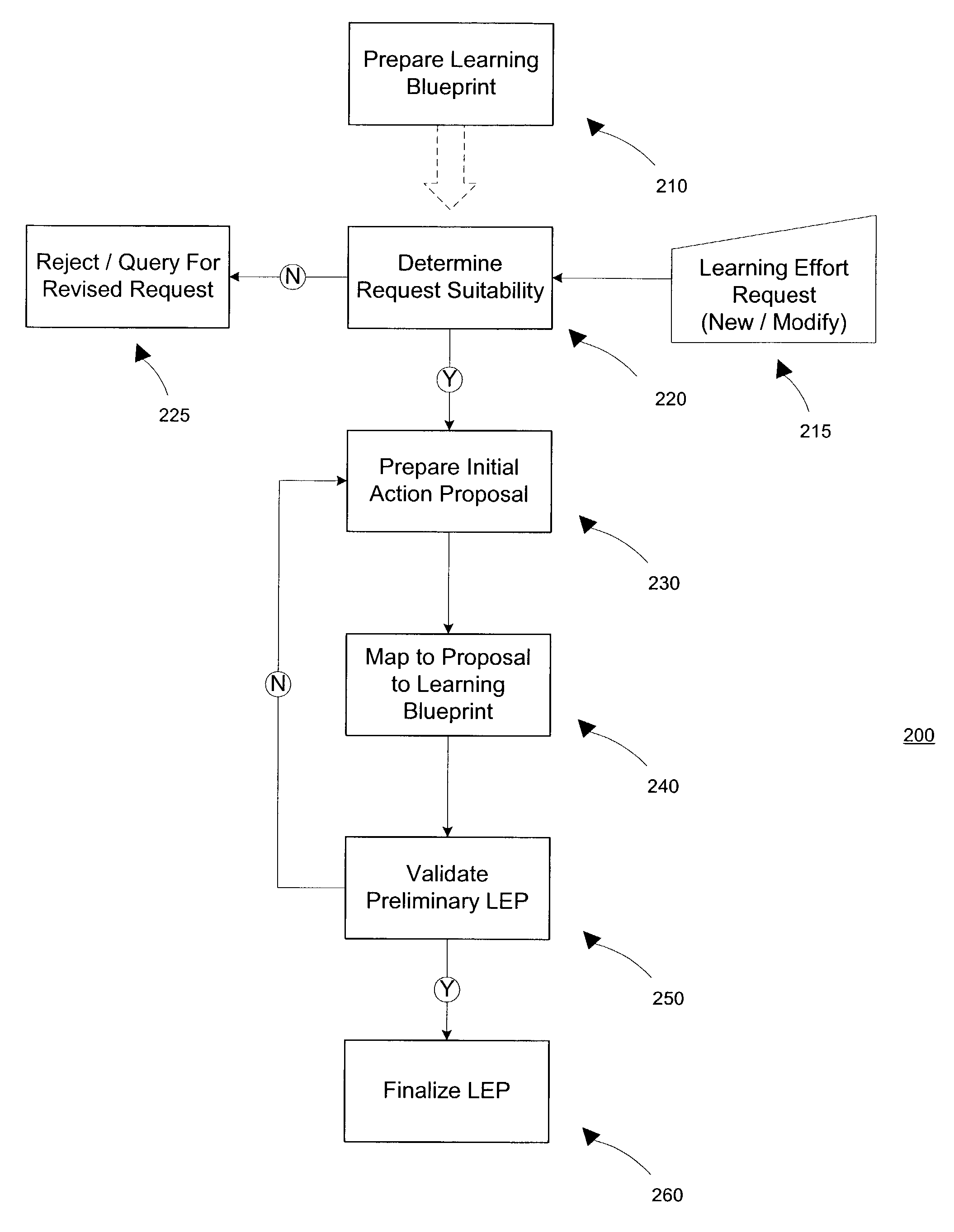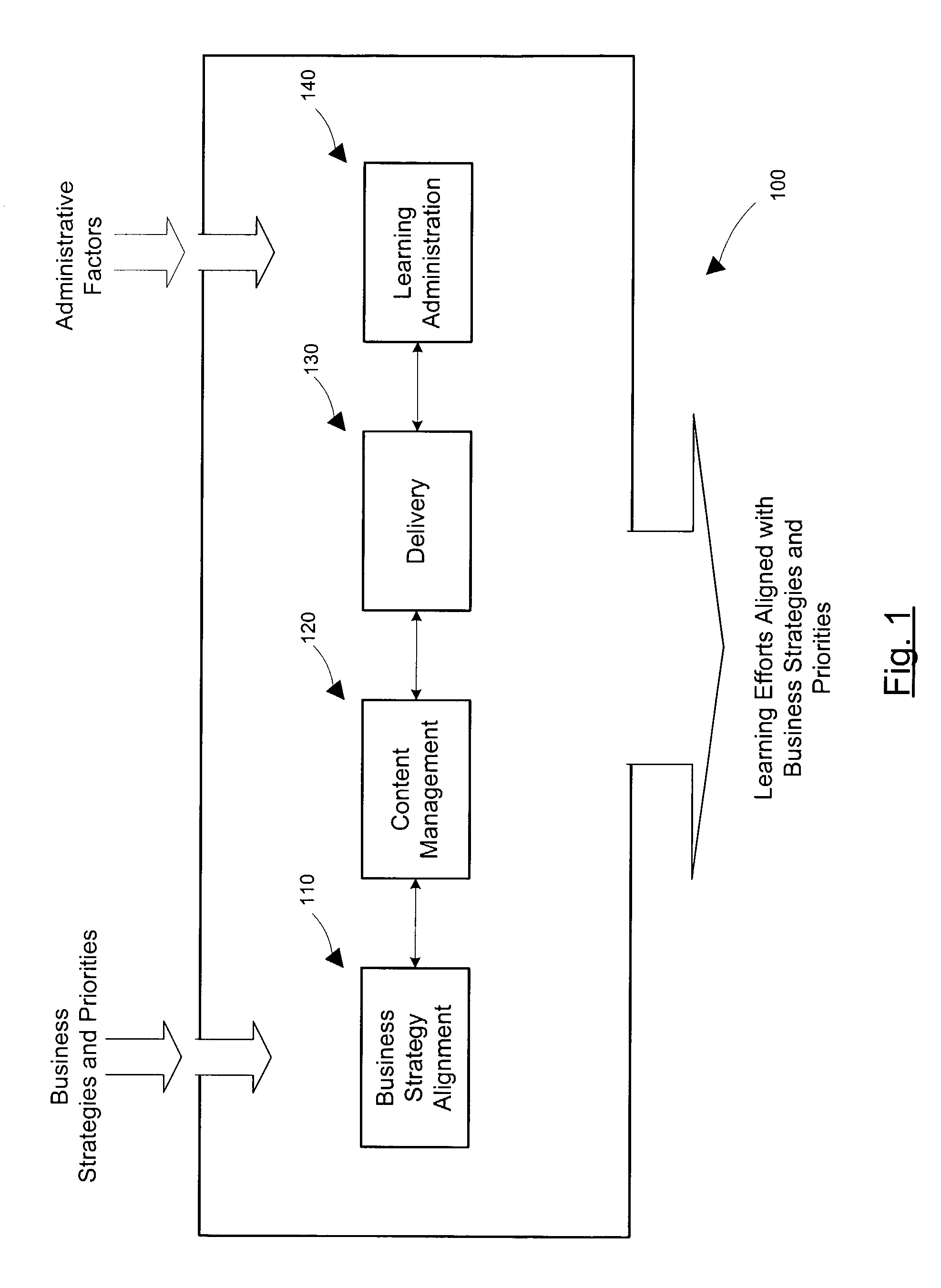Organization executives are facing urgent business imperatives that demand changes in their training organizations.
A difficulty faced by learning systems in supporting this rapid change in business positioning is that many different individuals in a given company perform many different functions and therefore require different types of training to implement a single change in business position.
The longer such training takes, the more the implementation of strategic
business objectives is delayed.
Leaders of companies may be forced to forgo undertaking bold yet lucrative business growth plans, because bold growth plans require that the company has the ability to rapidly attract,
train, and / or deploy a skilled workforce.
Such mergers and reorganizations often necessitate massive post-merger / reorganization integration efforts by the remaining companies.
Finally, the management of contemporary companies often view their companies' internal training organizations or efforts as bloated cost centers with very little
visibility into cost allocation and virtually no accountability when it comes to returning adequate value on learning investments.
The learning solutions currently applied in contemporary organizations fail to satisfy these imperatives.
Product-focused training of sales forces therefore may be inconsistent across product lines, e.g., in terms of objectives and format.
This may result in unnecessary and redundant training content, and an ineffectiveness in meeting the
business objectives of the organization.
Product-focused training is especially detrimental to sales in so-called “high tech,” financial, or
computer software industries where a product line may consist of numerous components that can be integrated separately or in various combinations to provide customized “solutions” to clients.
The selling employee under a product focused approach is not trained to understand the strategic markets, the customers'
business requirements, the overall value potential of a given solution, and the market factors driving the need for the solution.
By focusing learning efforts only on a particular product or series of products, the selling employee is not equipped to sell complete solutions that meet customers' and employers' overall corporate objectives.
While this approach may appear attractive from a purely financial perspective because it limits personnel and infrastructure costs, this solution becomes less suitable when the employee students are located in various remote areas (thus requiring travel) and / or have independent, conflicting schedules of availability for instruction.
Furthermore, recruiting and training qualified instructors requires significant effort and specialized skills from a learning organization's coordinators.
Thus, this approach is less suitable as the number of necessary instructors grows (such as where many courses are needed or where the same is course is needed in various languages).
Unfortunately, the compiling and maintenance of self-paced computer delivered training requires both
subject matter and technical expertise and much development effort to approach the level of effectiveness of classroom training with an instructor.
Additionally, such computer-delivered instruction systems are unfortunately not ideal for all types of learning needs, such as where group activities, student-to-student interactions, or student-to-instructor interactions are essential for optimum learning.
While the
virtual classroom approach can reduce personnel, travel and
physical infrastructure needs and still retains the flexibility of relatively easy course content updating, it does not allow self-paced instruction for students having independent and conflicting schedules of availability.
Many organizations simply will not have the technical infrastructure to be able to utilize virtual classrooms for all of their learning needs.
Another
disadvantage of contemporary learning solutions is that they fail to provide the ability for executives to monitor performance of learning solution efforts in achieving their underlying purpose of furthering business strategies.
The inability to accurately monitor performance
metrics leaves organizations and their learning services with an inability to ensure
service quality, allow for accurate resource forecasts, allocate costs and provide a means to measure the learning solution's success helping the organizations meet goals and commitments.
This aspect makes it difficult for executives and learning administrators to make certain that ongoing and future learning efforts are continuously aligned with business strategies, priorities and goals.
Contemporary learning solutions employed in the business world have failed to integrate the many complicated processes and systems that must be implemented to ensure that a given company's learning efforts meet their learning needs as dictated by prioritized business strategies.
 Login to View More
Login to View More  Login to View More
Login to View More 


